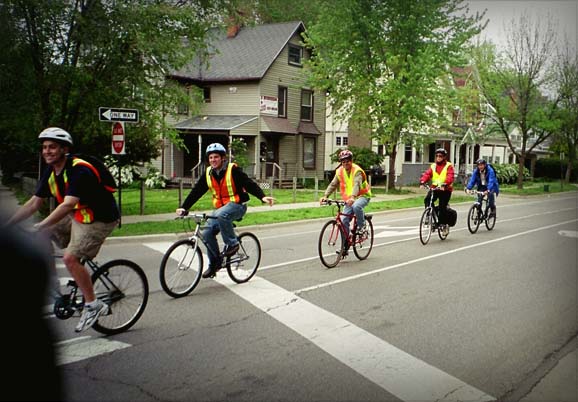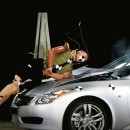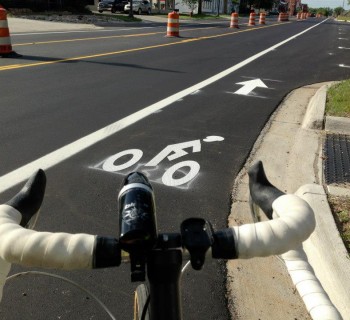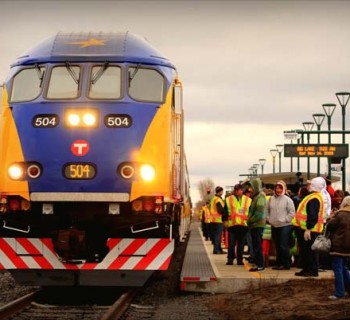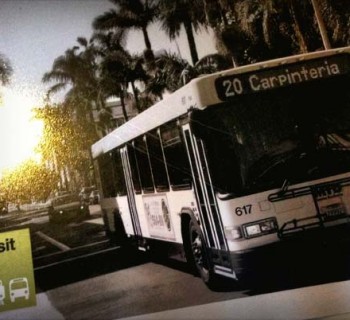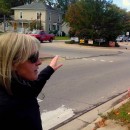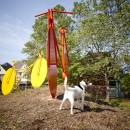DETROIT—Where does bicycling fit into the plans of the newly established Southeast Michigan Regional Transit Authority? Although integrating bicycle traffic into the region’s public transportation grid may not be a top priority for the body’s governing board, right now, the topic is one that does spark interest among individual board members.
Created by Michigan’s state legislature late last year, the RTA is charged with overseeing public transportation in Macomb, Oakland, Wayne and Washtenaw Counties. Its responsibilities include coordinating the routes of local bus systems and transit services like the yet-to-be-constructed M-1 Rail line, distributing federal and state funds to local service providers and implementing a new rapid transit bus system.
At the moment, the RTA’s 10-person governing body is focused on setting ground rules, establishing a stable revenue stream and selecting a chief executive officer for the new agency. Despite this busy agenda, several members of the board took time to speak with Mode Shift on the topic of bicycle transportation during their July 9 meeting at Wayne County Community College in Detroit.
Board Members Wirgau and Potter of Oakland County and Gatti of Macomb County declined to comment. Listed below are the other board member’s responses to the question: how does bicycling relate to transportation policy in the region?
 Paul Hillegonds, Governor Representative
Paul Hillegonds, Governor Representative
“I ride a bicycle. Bicycle riding’s a great thing. I’m not sure bicycles fit the public transit definition. My sense is the accommodation for bike paths and bicycle riding is more of a SEMCOG planning process, and we’ll be focused more on public transit that involves multiple riders, but I’m still learning too.”
 Liz Gerber, Washtenaw County
Liz Gerber, Washtenaw County
“The RTA hasn’t taken up that issue formally as a policy issue. Obviously we’re still trying to get our organizational act together. I have relatively limited experience in how bicycling integrates with other transportation modes. Certainly in the Washtenaw region, bicycling is an important element of transit. I think AATA has done a very good job of trying to bring that conversation into planning and programming, and so I would certainly hope to continue and build on those efforts. I don’t have any specific ideas about how to do so. Obviously bicycling has a transit element. It’s also got an infrastructure municipal element. ... I would hope that it would continue to be an important part of any transit planning in the region.”
 Roy Rose, Macomb County
Roy Rose, Macomb County
“Bicycling is a form of transportation. In fact, it was a form of transportation before cars were a form of transportation. So I think it’s an important part of it. Myself, I bicycle not a lot, but I do bike. And bike trails and bikeways are an important part of it. I’m not exactly sure on how it all comes together right now. It’s just that it’s another spoke in the cog of a wheel that we have to fit in at some point along the way.”
 Mary Lisa Franklin, City of Detroit
Mary Lisa Franklin, City of Detroit
“I think it relates a great deal. I think it’s important... People who do not use personal automobiles should have the right to take their bicycles on public transportation. So I think it’s integral part of transportation in the city.”
 Dr. Curtis Ivery, Wayne County
Dr. Curtis Ivery, Wayne County
“I haven’t given it a lot of thought, but I like the idea, the concept. I know that several other states -- New York, for example -- are doing a lot with that as a part of a transportation concept. And I would certainly think it’s something we should look at. I’ve not given it a lot of thought, but I would be more than open embracing such an idea.”
 Mark Gaffney, Wayne County
Mark Gaffney, Wayne County
“It’s one of the things that as a matter of fact already fits in, because you can see bike racks and bicycles on the front of buses. Now I’m going out on a limb and say, ‘I bet you see more of it on our Ann Arbor providers than in our Detroit or perhaps our SMART provider,’ but it ought to be a growing part of what we do in the future.”
 Richard Murphy, Washtenaw County
Richard Murphy, Washtenaw County
“Bicycling is an important part of the system along with walking and transit and driving, and we need to be aware of supporting a Complete Streets approach to the transportation system and not just looking at any given piece in isolation.”
Should the RTA consider it when planning and design gets underway? Tell us and we'll share your comments with them.


